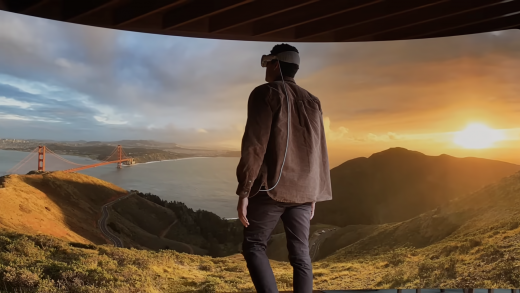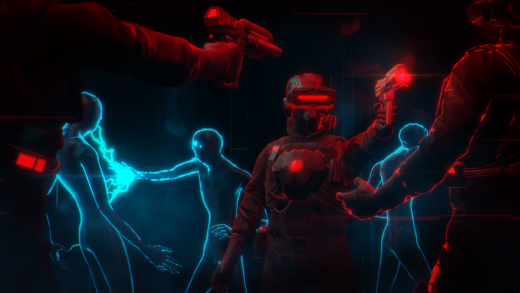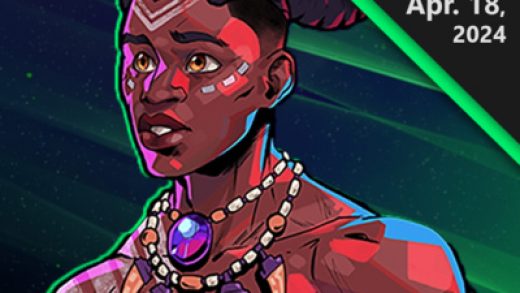
by BoardGameGeek reviewer EndersGame
The United States Playing Card Company (USPCC), makers of the famous Bicycle brand of playing cards, is a playing card manufacturer with an illustrious history going all the way back to the late 1800s. But in many ways they’re also at the forefront of innovation, and very much at the forefront of innovation in playing cards. So it’s no surprise that they have been one of the first in the playing card industry to jump into the 21st century by offering NFTs in combination with their playing cards.
To celebrate the launch of Bicycle’s first-ever NFT collection, an exclusive launch party was held at Lume Studios in New York on the evening of December 9th, which corresponds to the first of two drops, the second being a week later. Let’s find out more, but you may wish to start by watching the official trailer from Bicycle Cards about the NFT launch here.
What are NFTs?
So what are NFTs? If you already know all about them, you can skip this and go straight to the next section. But perhaps you’ve heard about NFTs but don’t really know what they are. Chances are good that you have come across them in the news, because throughout 2021 a number of NFT sales have made headlines for raking in incredible sums of money. While they’ve been around for several years already, they have really taken off in the past year.
NFT is an acronym that stands for non-fungible token. For most of us, that doesn’t say much other than that it doesn’t have anything to do with fungus. And deep down we’re not sure we’ve even got that part right. But actually non-fungible means that something is completely unique and cannot be replicated. It’s much like that ultra-rare one-of-a-kind collectible sports trading card you remember from the 1980s. But in the case of NFTs these are products that exist purely in digital form.
Blockchain technology is used to store their information and to verify the name of the individual that is their actual owner. Blockchain is a reference to a networked system of thousands of computers worldwide that store the digital information about the image, along with a digital certificate of ownership. While the digital image represented by an NFT can be duplicated infinitely, only a single owner is associated with it. So really NFTs are all about the ownership, and owning an NFT is like owning a token that proves you are the owner of the “original”, even if others may have copies.
NFTs can be used by creators and artists as an additional way to sell their work, and by buyers to support creators and artists, and even to create a digital collector or as a potential investment. A lot of the fuss around NFTs has been around the sale of digital images, but all kinds of things have been sold, sometimes for exorbitant amounts. As long as a digital version of a product can exist, so can an NFT. The founder of Twitter sold an NFT corresponding to his first tweet for around $3 million. An NFT of a video clip of a LeBron James slam dunk sold for over $200k. And an NFT of a work by the digital artist known as Beeple raked in a cool $69 million. That’s more money than some physical paintings produced by great masters of art! There are even NFTs for digital pet rocks – and some of those have sold for large sums of money too.
Oddly enough, owning an NFT doesn’t mean that you own the digital image itself or can reproduce it however you like, because you only get limited rights for reproduction, and others are still allowed to display the work as well. But it does give you some bragging rights and some sense of quasi-ownership. And you can certainly turn around and resell the NFT, often for the kind of big numbers that you purchased it for, or preferably for even more.
The technology behind all this has produced a thriving NFT market. And while it’s anybody’s guess what the future holds in the long term, it’s certainly proving very popular. Large sums of real money are changing hands in exchange for NFTs. There has been some criticism of NFTs, notably in connection with their environmental cost, since each NFT transaction requires a considerable amount of computer processing power, which in turn impacts the environment. But for now, at least, it seems that they are here to stay, and there are early adopters that have become millionaires courtesy of them.
What is Bicycle doing with NFTs?
The Bicycle brand is USPCC’s flagship, and has such a long history going back to the 1800s that it can well be considered in the antique category. But being old doesn’t make this company old-fashioned. In recent years the company has been very single minded about finding new ways to bring young consumers on board.
To begin with, they continue to produce creative and interesting in-house custom decks of playing cards on a regular basis. And they have been making aggressive efforts to enter the boardgame space with a growing inventory of social games and party games that appeal to a modern audience. Recent USPCC presidents have indicated a strong awareness of the important playing card heritage they have inherited, and expressed a commitment to building a lasting legacy, by expanding the company’s range into new areas of merchandise, and by introducing playing cards to a new generation.
Given their ambitious vision for the future, it is no surprise that the Bicycle brand has boldly stepped into the NFT marketplace as well, and seen this as an opportunity to attract new customers, and explore new terrain for business. It’s a way that they can provide modern consumers and collectors with the kind of creative and innovative digital products they are looking for, corresponding to the playing cards that have long been USPCC’s area of expertise. A representative from the company put it this way: “At Bicycle, we’re a heritage brand that has been at the forefront of playing cards for over 135 years and this NFT launch marks a special moment in our history where we’re bridging the gap between tradition and innovation.“
For the digital artwork that is being offered for sale as NFTs, USPCC obtained the services of respected playing card artist Adrian Valenzuela. Adrian is well known in the playing card industry for his many designs, one of the most popular being the Memento Mori Playing Cards which he produced in collaboration with magician and youtuber Chris Ramsay.
The concept is called the “Genesis Collection”, and it represents a digital deck of playing cards as they might look a thousand years in the future. Adrian’s mission was to create a digital deck that imagines how Bicycle playing cards might look a millennium from now. The artwork he has produced bears the hallmarks of the classic playing cards we are all familiar with, including the four standard suits, with indices clearly indicating these along with the values. A striking one-way design strikes a modern touch that captures the feel of a digital era, which is further emphasized with a colour scheme that relies of a vibrant pink, blue, and yellow.
Various marketplaces are used for buying and selling NFTs, and the Bicycle’s new NFT collection is being offered for bidding on the platform Kolectiv, and on their official app. To handle their new venture into this new world, the executives at USPCC hired Spool Marketing to take care of their public relations in the United States, especially in light of their expertise in the NFT and crypto space.
The Genesis Collection
The Genesis Collection of NFTs that is being offered for sale consists of two main drops:
1. The Unique Collection
Beginning on 9 December, unique NFTs went up for auction over on Kolectiv, each corresponding to a single playing card that has been digitally minted as a unique NFT. Altogether around 24 NFT cards are part of this initial collection, with the 10s through Aces in each of the four suits, plus the Jokers.
Along with each NFT, Bicycle Cards is also providing some additional perks and bonuses, such as a gorgeous acrylic case. This holds a digital screen that displays the NFT, a printed counterpart of the actual playing card (slightly altered to be truly unique), along with the rest of the printed deck. To see what this amazing package look looks like, see this video.
I can see these quickly becoming hot collectors’ items. Strictly speaking these additional items aren’t part of the NFT, so first-time buyers won’t be obligated to pass on these physical products when reselling the NFT.
The starting bid for each of these unique NFTs was 0.5 ETH, but the final sales are expected to go for much higher amounts. The first auction to close was for a Joker, selling for 3.22 ETH, which is the equivalent of US$12,496.56. Bidding is live for several other playing cards, and it won’t come as a surprise that the Ace of Spades is attracting the most interest, and at the time of writing it was receiving bids at least double that of the other cards up for auction.
2. The Main Collection
The main 8008 collection releases just over a week later on 20 December. These are a physical deck of playing cards that USPCC is producing in a print run of 8,008. It is beautifully presented with a lovely tuck box, which is in turn packaged in a lovely hard-shell foiled box that has been specially created for this deck.
Along with a copy of this limited edition physical deck, buyers will also get a corresponding NFT, each having its own unique digitally animated tuck case. Each has its own mint number from 1 through 8,008.
In addition, 32 of the 8,008 buyers will be selected randomly, and be assigned one of NFTs corresponding to the number cards 2 through 9 from the “Unique Collection”. That makes the deck and NFT package from the Main Collection very attractive, because not only do you get a physical deck, but you also get an NFT, and a chance to get one of the sought after Unique Collection NFTs.
These will sell for 0.08 ETH each, with the option of using a Shopify plug-in to pay in US dollars.
Getting your Bicycle NFTs
Effectively this gives two ways to get NFTs. The Unique Collection represents an NFT for a different individual playing card, with a printed counterpart provided for each, while the Main Collection is an actual deck, with a digital NFT counterpart for each. USPCC has also stated that NFT owners will receive exclusive perks from the company, such as access to community-only events, plus presales and whitelists of future Bicycle playing card NFT drops.
To get your Bicycle NFTs while they’re available you’ll have to head to Kolectiv and check out the listings there. Several cards from the Unique Collection are already listed, while the decks and NFTs from the 8008 collection are scheduled to go live as of 20 December.
I applaud the folks behind the Bicycle for trying something new and different, and for their willingness to experiment in an effort to keep the playing card industry fresh. A company representative had this to say: “The NFT launch demonstrates how Bicycle is leading the way for others as we continue to innovate and, in addition to introducing new tools that make our cards more digital and accessible, segue into a new era targeting younger generations.“
But Bicycle’s entry into this new space isn’t all about making money. They also plan to donate $100K of the profits made during their NFT launch to a non-profit organization called Mobile School, which has the goal of providing children around the world with access to education.
Final thoughts
Many big companies are entering the world of NFTs, with big brands like Adidas, Coca Cola, Budweiser, Sony, Time, Disney, Marvel and others leading the way. Given the forward thinking of the executives at the top of the Bicycle brand, it’s no surprise to see USPCC at the front-lines of this new territory.
But this is just the beginning. According to information announced by USPCC, there are plans to continue to expand in the area of NFTs by creating new digital offerings in future.
Regardless of how you feel about NFTs, it is good to see the Bicycle brand at the forefront of innovation, exploring new territory, and eager to lead the way in keeping our playing cards fresh. With an attitude to playing cards that embraces new possibilities and is unafraid to explore new areas, the world of playing cards is in good hands.
Want to learn more? Head over to the official site at Bicycle Cards.
About the writer: EndersGame is a well-known and respected reviewer of board games and playing cards. He loves card games, card magic, cardistry, and card collecting, and has reviewed several hundred boardgames and hundreds of different decks of playing cards. You can see a complete list of his game reviews here, and his playing card reviews here. He is considered an authority on playing cards and has written extensively about their design, history, and function, and has many contacts within the playing card and board game industries. You can view his previous articles about playing cards here. In his spare time he also volunteers with local youth to teach them the art of cardistry and card magic.



